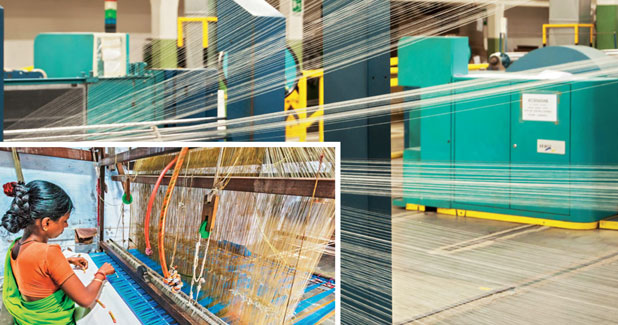
Indian textile industry: The next decade
Textiles is India´s foremost manufacturing industry and has a significant impact on the economy since it contributes to industrial output, employment generation and the export earnings of the country. With contribution of about 14 per cent to the industrial production, 4 per cent to the GDP and 13 per cent to the country´s total export earnings, the industry provide direct employment to over 45 million people.
– Shripad S Joshi
Textiles is India´s foremost manufacturing industry and has a significant impact on the economy since it contributes to industrial output, employment generation and the export earnings of the country. With contribution of about 14 per cent to the industrial production, 4 per cent to the GDP and 13 per cent to the country´s total export earnings, the industry provide direct employment to over 45 million people.
Prior to economic liberalisation in year 1991, the industry was predominantly unorganised in nature, however the scenario started transforming soon after that. The WTO has played an important role in the growth and development of the textile industry at global level. After the dismantling of the quota regime in 2005, India along with other developing nations would have gained with good results in textiles however its exports performance has been below expectations. Even after having several advantages in certain areas such as raw material, skilled labour, technology know how, its exports performance at a global level is weak as reflected in India´s market share of 4.7 per cent in the world trade in textiles and clothing, still a distant dream against China´s 37 per cent share.
Indian textile industry today
With abundant availability of raw material specifically medium and long staple cotton fibre, India is one of the largest manufacturers of cotton textiles in world with major application in apparel and home textile segments. It is predicted that with a production of 6.3 mn t production (source: ICAC), India would be at pole position in year 2015-16 overtaking China. India is second largest producer of cotton yarn, cellulosic fibre/yarn and silk and 3rd largest producer of synthetic fibres/yarns in the world. India is considered amongst top 5 suppliers of upholstery fabric and also the largest producer of Jute in the world.
However India loses its position when comes the topic of availability of speciality fibres / filaments and fabrics (such as high tenacity polyester filament yarn, fire retardant fibres, finishing chemicals´). Even some of the fibres/filaments such as Carbon, Aramid and Nylon 6 for specific application needs to be imported after paying heavy import duty.
Indian textile industry is supported by a well-organised textile engineering industry which meets about 50 per cent of the textile machinery requirements with the rest still met by imports. India produces world-class spinning equipment, which is also exported. However India is still dependent on imports for high technology shuttle-less weaving, knitting and continuous processing equipment.
On international trade level, India is the second largest exporter of textiles and clothing after China. According to WTO, in year 2013, India´s export of textiles and clothing was $36 billion representing 4.7 per cent share in world trade of $766 billion.
Technical textile is an emerging sector with tremendous potential in India. These are industrial textiles which are used for functional performance rather than aesthetics. Depending on the applications, technical textile could be in any form such as fibres, yarns, fabrics, etc. These products have a significant presence in agriculture, medical, industrial, mobiltech, building textiles and geotextiles in India.
The Government of India is also promoting the textile industry through different schemes such as Technology Upgradation Fund Scheme, sector schemes and scheme for Integrated Textile Park (SITP). Along with central government, state governments are also supporting the industry through additional subsidies such as term loans, power cost rebate and tax free holidays for certain years after project commencement. This is boosting the additional investment in those states.
In 2014, the Government launched a major programme ´Mak



